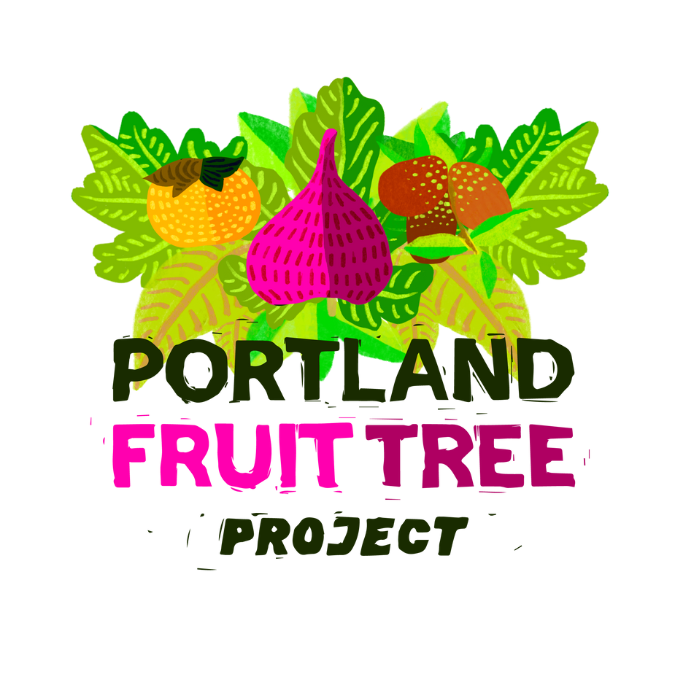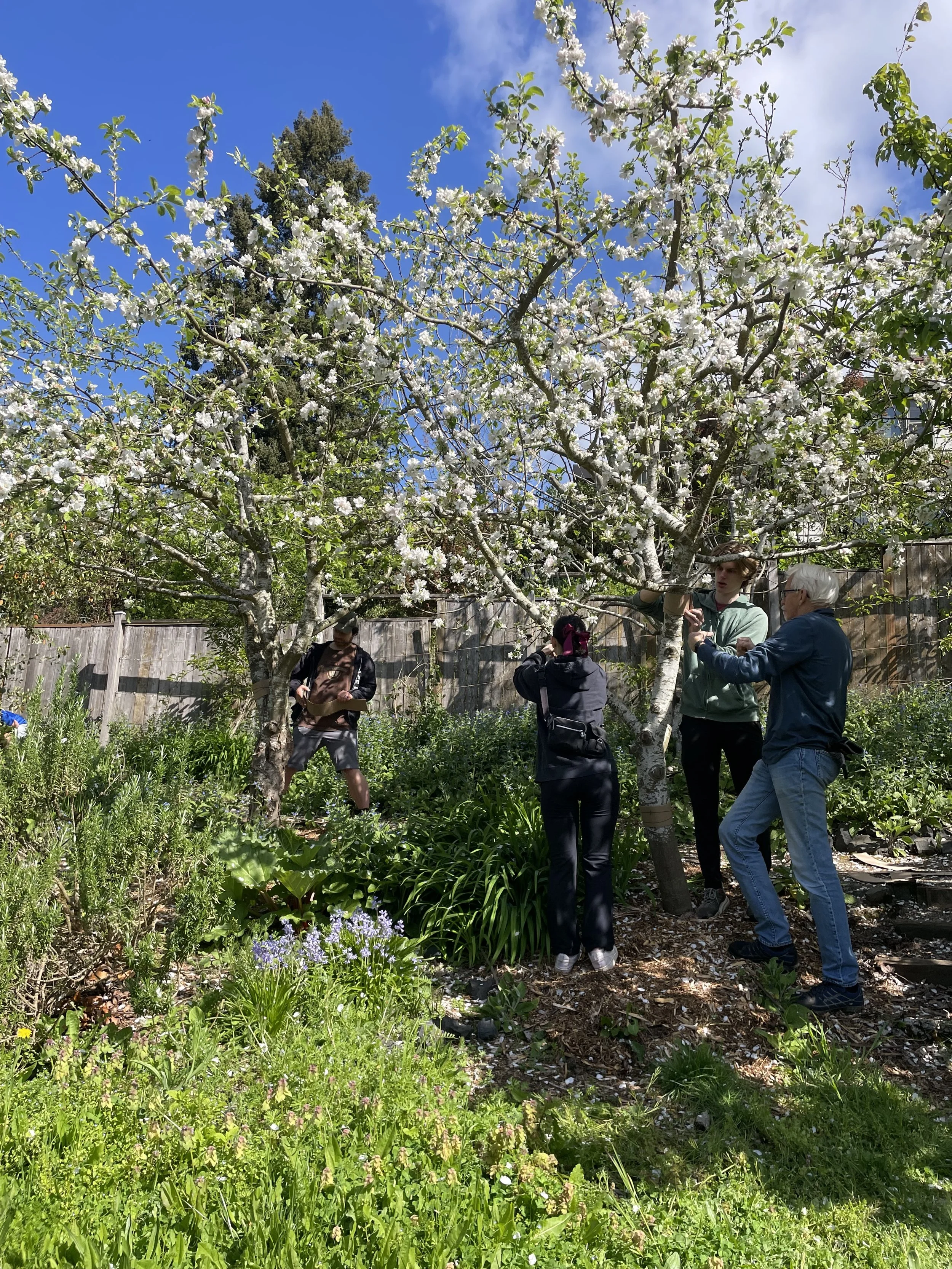Summertime Tree Care
Post sponsored by Welcome to PDX Real Estate Agent, Deb
〰️
Post sponsored by Welcome to PDX Real Estate Agent, Deb 〰️
Seasonal Care
Summer is in full swing, and we’ve started the harvest and summer pruning season strong. We want to share some tips for maintaining urban fruit trees this summer that will help keep them healthy, thriving and producing deliciously abundant fruit.
Connecting Canopies Interns pruning an espalier!
What can you do
Summer Pruning
The summer pruning window starts at the beginning of July and ends late September. This is the time to maintain and shape your fruit trees. Summer pruning is limiting to growth and helps keep them a manageable size while remaining open. Summer pruning is also the time to address any vigorous response growth if you had to make some structural cuts during the winter pruning season. Not sure what to do? We can help! Check out our tree care and coaching services!
Pome Fruit Tip : If you have your trees at a perfect size and openness you can head back some new growth to 3 leaflets passed the basal circle of leaves to encourage fruit spur development. Your fruit spurs can produce fruit reliably for 7-10 years! Through regular pruning you will be cutting out older spurs and hopefully encouraging the development of new spurs in ideal positions along a lateral.
Stone Fruit Tip : This is the only time we recommend pruning your stone fruit (any fruit with a pit in the center) in the PNW. Stone fruit are very susceptible to fungal and bacterial diseases that are prolific during our rainy overcast winters. While we don’t advise any big structural cuts to other fruit trees during the summer, this will be the time to fully prune your stonefruit up to the 30% budget. Waiting until after harvest may be too late for some stone fruit that may ripen in late September. Ideally you would prune your stone fruit as early in the summer pruning as feasible.
Fruiting Vines (Grapes & Kiwis) : Pruning to maintain airflow throughout the vine and to allow sunlight to reach the fruit will help with mildew that grapes are susceptible to and produce better tasting fruit. Kiwi vines are developing their fruiting buds the year before and the developing fruiting buds tend to be more fruitful if they are exposed to sunlight as opposed to being shaded out by a dense canopy. Maintaining your fruiting vines throughout the summer also helps future you come winter, when it is time to remove up to 70% of the vine for kiwis and 90% for grapes.
Ultimately summer pruning is about managing new growth and making sure there is adequate airflow/sunlight infiltrating the canopy.
Integrative Pest Management
Trunk Banding : If you placed cardboard around the base of your apples or pears now is the time to go ahead and replace them if you haven’t already. Completely discard the cardboard. Hopefully you’ve caught some coddling moth pupae and we want to completely remove them offsite in order to disrupt the life cycle for next fruiting season. Once you wrap your fresh corrugated cardboard around the base of the trunk and some main scaffolding limbs, we recommend checking the cardboard every two weeks for replacement.
Orchard Sanitation : Fruit trees that don’t get regular pruning or fruit thinning will tend to drop a lot of fruit before they can ripen. Raking the fallen fruit up and discarding it in your green bin will go a long way to helping mitigate pest pressure in your trees.
Soil Health : We know you already have wood chips out to your trees drip line but maybe they’ve broken down a bit since the last application adding treasures organic matter for microbes to break down and then release plant available nutrients from. Keeping a nice layer of wood chips around the base of your tree helps with water retention during the summer drought, helps keep the soil cool during these 90 degree days and continues the cycle of adding organic matter to the soil. Water plays a crucial role in soil health and the health of your tree. Watering deeply once a week around 15 gallons (or more depending on how large your tree is) near the drip line will satisfy your fruit trees needs and in turn help them be more resilient from pests and diseases.
Do you have questions or need help?
Need help harvesting? Check out our harvest programming!
Check out the Home Orchard Education Center for workshops and more
Find articles and more with the Oregon State University Extension school
This content was generously supported by:
Are you interested in sponsoring Portland Fruit Tree Project content? Send us an email!





